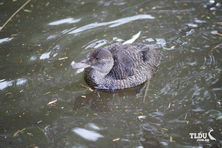
Shoppers Feedback:
Jan 17, 2017
Hello Ros,
I have now paid the invoice, but I would like to write to you just to say a big THANK YOU for getting me the Penguin!
The ChatterMate Penguin became a nice memory for me when I was in New Zealand, and I am so greatful to you for arranging so that I could have it! :-)
Thank you so much!!!!!!!!!!!
Regards,
Malin
Hi Ros,
Many thanks for your very kind email. I really appreciate your prompt reply!
I appreciate your advice regarding the decorations and customs. These are a gift for my daughter’s exchange student family so when she returns home on the weekend I will show her and see if she loves them as much as I do!
Thanks so very much again - I am truly grateful for your kind assistance.
Kind Regards
Bernadette
Ros,
Thanks again for the great customer service. It's a refreshing change!
Best regards,
Trevor
Hey Roz,
Thank you for your emails. Just loved my first order. The cute little Aussie bush critters are going to be used for an office Christmas decoration. My colleagues also liked them and talked about making an order to your site. I'll send you a photo when completed.
I'll be ordering more to send to my daughter's host family in America.
Fabulous service from you.
Kind regards,
Michelle
Thankyou. Order arrived today. One very happy grandson with his new beastly binoculars.
Regards,
Irene
- Home
- Wild Wonders
- Shop
- Aromas of Australia
- Australian Made
- Books
- Book Marks
- Christmas Decoration Sale
- Christmas Decorations
- Clocks
- Drink Holders
- Garden & Outdoor
- Gift Wrapping & Cards
- Home & Giftware
- Jewellery
- Keyrings
- New Products
- Pencils & Pen Holders
- Photo Frames
- Plush Toys
- Plush with Sound
- Sheepskin Rugs
- Stationery
- Stone Carvings
- Toys & Games
- Travel Goods
- Wedding
- Wild Figurines
- Wildlife Safety Products
- Wind Chimes
- Wine Charms
- View All Products
- Wildlife
- Australiana
- Explore
- Contact Us

Quick Facts
| Length: | 54 cm |
| Height: | - |
| Weight: | 910 grams |
| Colour: | - |
| Habitat: | Prefers permanent fresh water swamps and creeks with heavy growth of cumbungi, lignum or tea-tree |
| Food: | Feeds at night on algae, seeds and vegetative parts of aquatic grasses and sedges and small inverteb |
| Predators: | - |
| Status: | Endangered in VIC, Vulnerable in SA & NSW, Secure in WA, Not Present in NT & TAS |
The Freckled Duck is a dark greyish-brown duck with a large head that is peaked at the rear, and a distinctive narrow and slightly upturned bill. The dark brown plumage is evenly freckled all over with white or buff. During the breeding season the male's bill becomes crimson at the base. The Freckled Duck is also know as Canvasback, Oatmeal Duck, Speckled Duck and the Diamantina Duck
The Freckled Duck may be easily confused with the Pacific Black Duck and the Hardhead.
The Freckled Duck is found primarily in the south east and south west of Australia, occurring as a vagrant elsewhere. It breeds in large temporary swamps created by floods in the Bulloo and Lake Eyre Basins and the Murray Darling System.
The Freckled Duck prefers permanent fresh water swamps and creeks with heavy growth of cumbungi (bullrushes), lignum or tea-tree. During drier times, the Freckled Duck moves from ephemeral (not permanent) breeding swamps to more permanent waters such as lakes, reservoirs, farm dams and sewerage ponds. They generally rest in dense cover.
The Freckled Duck is forced to disperse during long inland droughts. The species may occur as far south as coastal New South Wales and Victoria during such times.
Freckled Ducks feed at dawn and dusk and at night on algae, seeds and vegetative parts of aquatic grasses and sedges and small invertebrates.
Nesting usually occurs between October and December but can take place at other times when conditions are favourable. Nests are usually located at or near water level, and are made from finely woven twigs with a layer of down. Males remain with females during early incubation, but the female does all of the incubation and rearing of the young.
During the breeding season, the male Freckled Duck’s bill becomes crimson at the base.During the breeding season, the male Freckled Duck’s bill becomes crimson at the base.
Threats to the Freckled Duck include draining and clearing of wetlands and swamp habitat; changes to natural river flow and flood as a result of dams, weirs and irrigation, grazing and trampling of wetland habitat by stock, and illegal shooting. This species is listed as Vulnerable in New South Wales.
Last Updated: Thursday 9th January, 2014
BirdLife Australia - www.birdlife.org.au
BUSH e-TELEGRAPH
Signup for our monthly newsletter the "e-Telegraph"
Quick Links
Home | The Beginning | About The Land Down Under | Wild Wonders | Advertise on Wild Wonders | Christmas Decoration Sale | Christmas Tree Decorations | Drink Holders | Plush with Sound | Stone Carvings | Wildlife Wine Charms | Freebies | Australian Wildlife | Help Our Wildlife | Australiana | Photo of the Month | Explore The Land Down Under | Contact Us | Legal Notices

